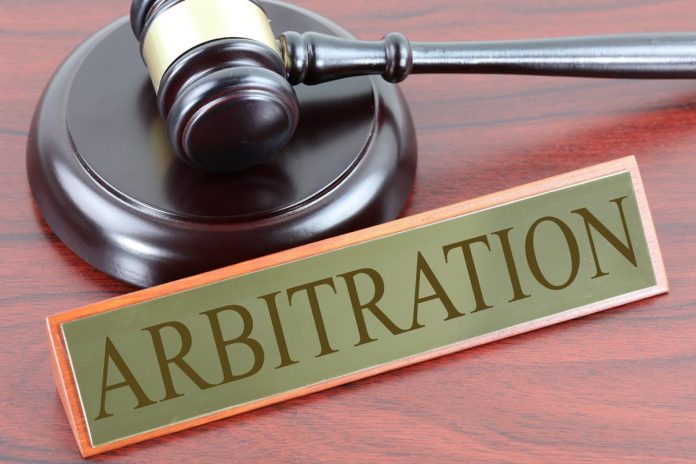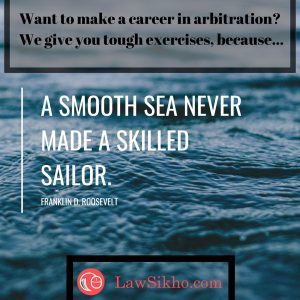This article is written by Khushika Setia who is pursuing a Certificate Course in Arbitration: Strategy, Procedure and Drafting from LawSikho.
Table of Contents
Introduction
Hot-tubbing method originated in Australia within the Australian Competition Tribunal or the Australian Trade Practices. The method was practised throughout Australia and has officially been introduced in the Federal Courts of Australia, Victorian Supreme Court. The question that begs consideration in arbitration proceedings is the independence, impartiality and the unbiased nature of the expert and the testimony proffered in the proceedings.
Expert witness often plays a crucial role in arbitration or litigation matters. Traditionally, for complex technical issues, an expert is appointed to give scientific, unbiased and independent findings over the fact in issue. An expert is a person who possesses the specialised knowledge, expertise and experience and has gathered information by observation, practice or proper studies. However, International observers have shown their concerns about the reliability and the credibility of the expert evidence and the testimony. Most importantly, the lawyers have control over the cross-examination process, they either grill with the thorniest questions or the unanswered one. However, most of the Arbitration Institutions provide the procedure for the examination of the expert during the arbitral proceedings. Most of the countries have adopted the procedural reforms and intend to make the expert evidence process more streamlined, less adversarial and fruitful.
What is Hot-tubbing?
Hot-tubbing is also referred to as “Concurrent Expert Witness:” Tandem Expert”, “Dueling Experts”. Hot-tubbing is the method where the expert simultaneously gives their evidence and arbitrator leading the discussion between them. The written statements and all other evidence has been concluded, experts step in the witness box. The one expert presents his facts and figures and the opposing expert may then ask a question or vice-versa. Each expert presents their facts and figures. When they conclude themselves, then the counsel of either side or the arbitrator may question the expert so as to understand the testimony and reach a better solution.
Sometimes, a simple and single question is asked by the Counsel/judge so as to that they can arrive at an appropriate conclusion. However, the rules and procedure of conducting the concurrent expert witness may vary from country to country. The Hot Tubbing method in the arbitration is quite different from litigation. An expert witness is to testify sequentially and present their part of the story on the same issue in the same hearing. It feels more or likes “two ships passing in the night”. This method of Hot-tubbing is an alternative to the traditional process of obtaining expert witness testimony.
Hot-tubbing Procedure
- The basic facts are presented before the arbitrator and all the non-expert witnesses are to be examined, cross examined and re-examined.
- After that, the expert witnesses are brought together. Each expert would prepare their written report. Further, these reports are exchanged and experts can have discussion over the reports exchanged and prepare their joint statement. Joint statement/ report contains a summary of the matter on which both the experts agree and identifies the matters on which they completely disagree.
- Before the trial, the parties produce an agreed agenda for taking concurrent evidence based on the joint statement. This contains a numbered list of the issues where the experts disagree and must be provided in sufficient time to enable the judge to consider it properly.
- At trial court hearings, the experts are sworn together and take their place together at the witness table. Using the summary of matters upon which they disagree, the judge chairs a “directed” discussion of the issues about which there is disagreement. The process provides an opportunity for each expert to place his or her view on a particular issue or sub-issue before the court. The experts are encouraged to ask and answer questions of each other. The advocates also may ask questions during the course of the discussion to ensure that an expert’s opinion is fully articulated and tested against a contrary opinion. At the end of the discussion, the judge will ask a general question to ensure that all of the experts have had the opportunity to fully explain their positions.
- The judge- during the above process questions the experts, taking topic by topic, putting the same question to each expert in turn.
- At the end of the questioning on each topic the judge invites the respective advocates to further question the experts, a variation of cross-examination or re-examination but more of a process of clarifying what has emerged in the judge-expert exchanges.
- After the judge has finally finished with the experts, the advocates will be invited to further question both experts, principally by way of clarification, but not to introduce entirely new topics.
Pros of Hot-tubbing Experts
The following are the advantages of the hot-tubbing expert process:
- It is a cost-effective process and is a speedy resolution process in comparison to litigation.
- The hearing process mainly focuses on the issue in the dispute. As the expert report focuses on the most important contentions first.
- The discussion between the expert giving more clarity over the issue as the opinions of the expert are more clear and understood.
- It encourages open discussions that may result in speedy disposal.
- The parties to the dispute are able to understand their strengths and weaknesses more clearly and can resolve their differences amicably and reach a settlement.
- It helps the Judges to recall and understand all the facts and figures of the case and also understand the positions of the experts by hearing testimony simultaneously and sequentially. However, in the case of disagreement, it helps the Judge/Arbitrator to compare the differing opinion.
- The experts are open to ask questions to each other and testify sequentially. It focuses on the discrete issue and helps in clarifying the issues.
- The role of the Legal Counsel is somehow declined as the hot-tubbing encourages the discussion.
- Flexible process.
Cons of Hot-tubbing Experts
On the downside the hot-tubbing of the expert has following drawbacks:
- It is necessary that an expert must possess some additional skills like excellent debating skills, skepticial approach, good communications skills, active listener etc.
- During the proceedings, the expert must be fully prepared. If he is not fully prepared the proceedings may be reduced substantially.
- Sometimes due to the testimony of the expert, the Arbitrator may focus on the small issue and may eventually drift from the real question.
- It is necessary that the experts should respect or know each other. If they don’t know or respect each other, there is a probability that the approach of hot-tubbing will not go well with parties.
- Expert demeanour plays a very pivotal role. The body language, during the discussion, may imprint positive as well as negative ideology in the mind of the arbitrator.
- There is a risk that during the discussion that expert may lose their control and may slip into non-professional language. The experts may forget to remain professional and formal before the arbitrator.
- Due to non-formal examination and cross-examination process, key evidence may be skipped or missed by the Arbitrator.
Use in International Arbitration
Many countries adopted the procedure of the hot-tubbing of the experts. However, different tribunals have laid down their own set of rules or guidelines for the smoothing applicability and enhancing the usefulness of the expert evidence.
Recently on 1st April 2019, Chartered Institute of Arbitrators (CIArb) published the guidelines for witness conferencing in International Arbitration, wherein CIArb provided a non-exhaustive checklist of the factors to consider in determining a procedure that will further the efficient and effective taking of evidence and procedural orders that may be used as a basis for crafting appropriate directions for witness conferencing.
International Bar Association (IBA) Rules provides the tribunal with discretion to implement various procedures with respect to the submission and taking expert evidence. For example, Article 5(3) of the IBA Rules provides that “[t]he Arbitral Tribunal in its discretion may order that any Party-Appointed Experts who have submitted Expert Reports on the same or related issues meet and confer on such issues.
The IBA rules provide the various methods for the testimony of the experts at the evidence stage.
United Kingdom: Lord Woolf expressed his view relating to hot-tubbing of the expert and familarised his view among others so as to curb the lengthy and costly litigation process. Various reforms were introduced to promote concurrent evidence. However, the hot-tubbing is not much encouraged in the UK, it only encourages single experts reporting systems or the corresponding expert views.
Canada: Canada has been following the hot-tubbing of experts. The CCT Rules give the discretion to the tribunal to testify the expert witness and promote the open discussion and question relating to the facts in issue. It also provides the proper procedure to be followed during the hot-tubbing. Of the expert witness.
United States: US has very dim views relating to the hot-tubbing of the expert. Alternative expert witness practices have not found widespread use within U.S. jurisdictions, they have been used (in varying forms) with reported successful results in several federal cases, including cases involving voting rights, contractual disputes and corresponding damage calculations, and products liability claims.
Conclusion
Litigation is the stressful, costly and lengthy affair whereas, hot-tubbing is cost effective and can be summed up timely. It assures a helpful and successful settlement. However, no one size fits all. Each case is different. In the nutshell, hot-tubbing gives ounces of benefits to the advocates, arbitrator/judge, parties to the dispute. This scientific approach of expert examination eliminates the bias and understands the issue in a better manner. It helps in releasing the strengths and weakness and improves the quality of the decision rendered by the arbitrator or tribunal.
Students of Lawsikho courses regularly produce writing assignments and work on practical exercises as a part of their coursework and develop themselves in real-life practical skill.
https://t.me/joinchat/J_0YrBa4IBSHdpuTfQO_sA
Follow us on Instagram and subscribe to our YouTube channel for more amazing legal content.
 Serato DJ Crack 2025Serato DJ PRO Crack
Serato DJ Crack 2025Serato DJ PRO Crack











 Allow notifications
Allow notifications



